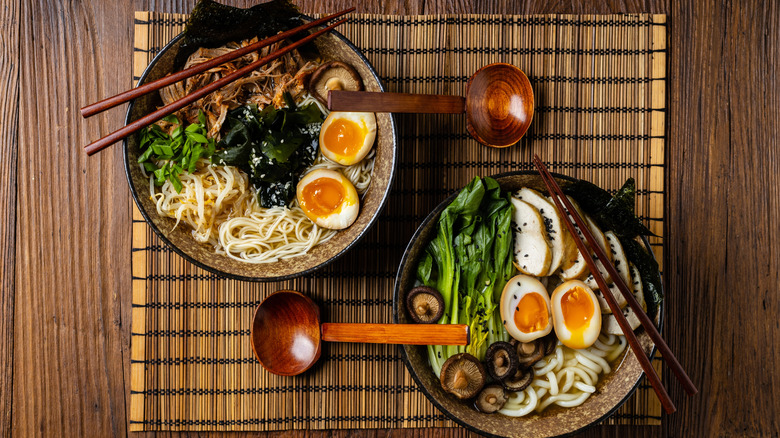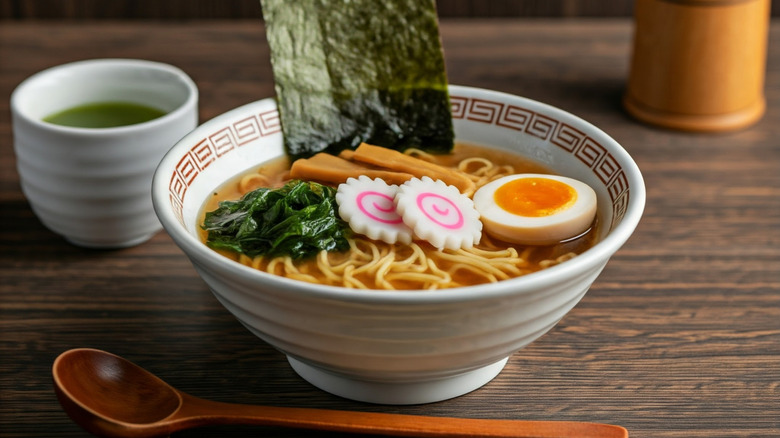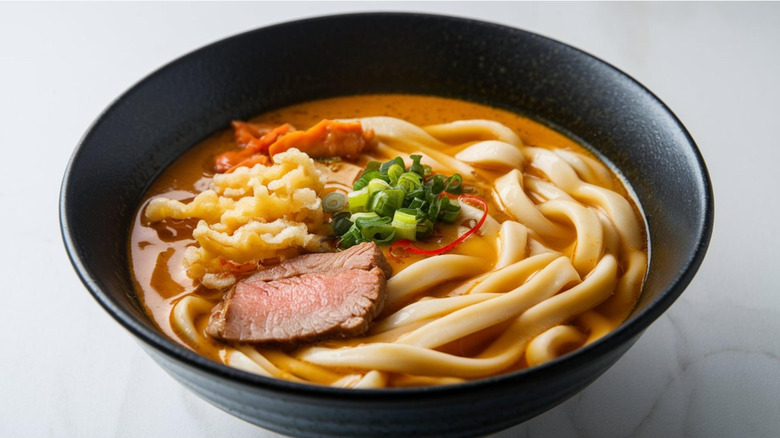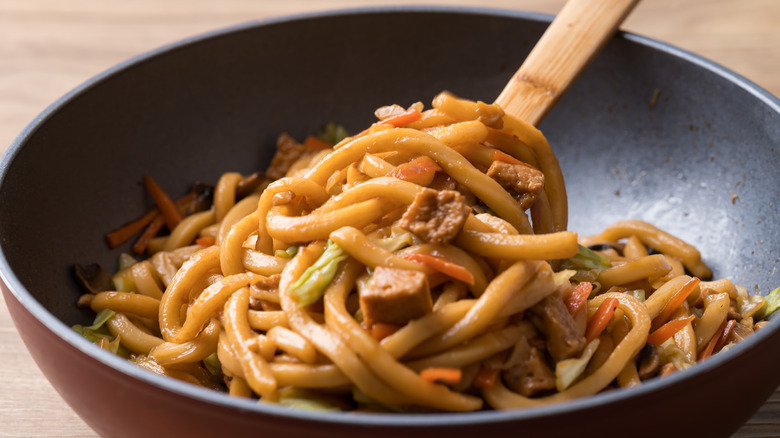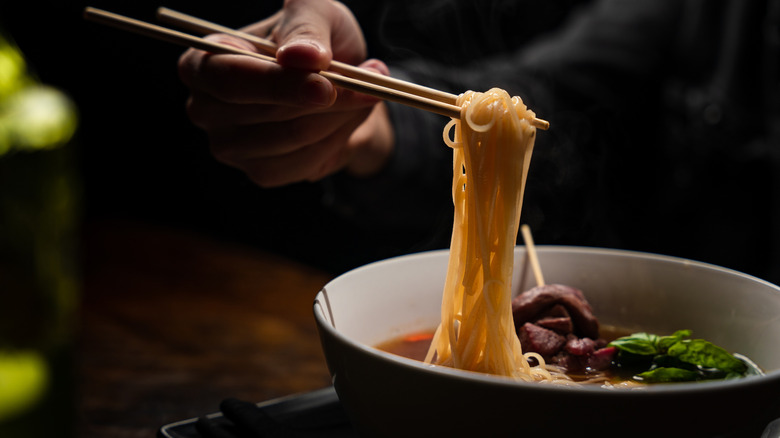What's The Difference Between Udon And Ramen?
Ramen and udon are two of Japan's most iconic noodle dishes. If you're a fan of Japanese cuisine, then you've likely enjoyed both. But, if you're less familiar with them, your main point of reference may be the instant ramen packages available at the grocery store. Although you can add a secret ingredient to make instant ramen taste way better, there is much more to this cultural dish than what you can buy prepackaged.
At first, it's easy to see the similarities between these two noodle dishes and think of them as basically the same. Both ramen and udon are long noodles that are typically served in a hot, savory broth with an assortment of flavorful toppings. However, they also have distinct differences in their shape, texture, flavors, and how they're served.
When diving into a new culinary scene, it's essential to learn the differences between dishes and understand what you're ordering. Learning these differences is a key step to understanding Japanese cuisine, which will also help you pick restaurants and order according to what suits your taste. (You can also learn the difference between ramen and pho to pick the best noodle bowl for you.)
What is ramen?
Ramen is a beloved noodle soup made with long and thin wheat noodles served in a flavorful broth with a wide range of possible toppings. Springy ramen noodles are made by adding kansui (a baking soda solution) to the wheat dough.
Although ramen is now seen as a staple dish in Japanese cuisine, this noodle-making method was first invented in China. As trade opened up between Japan and other nations in the 1850s, ramen entered the country's mainstream food culture for the first time.
Throughout the years, ramen and ramen stalls became more and more popular in Japan. However, the affordable meal especially rose in popularity after World War II when many families did not have a lot of money for food; a bowl of ramen was a hearty and delicious option.
Today, ramen is enjoyed in Japan and at Japanese restaurants around the world. For a budget meal, many buy packages of instant ramen, which you can make restaurant-worthy with a simple ingredient swap.
What is udon?
Like ramen, udon is a savory noodle soup; and, like ramen, this type of noodle originated in China. But, udon likely entered Japanese culture between 618 and 907 C.E., much earlier than ramen. Today, it is a mainstay in Japan's culinary scene.
The dough is made from wheat flour, salt, and water and made into thick round or square noodles. There are several different ways to prepare and serve udon noodles depending on the broth, meat, and other ingredients included in the recipe. The most standard udon dish is kake udon, where the noodles are served in a thin, umami broth made from dashi, soy sauce, and mirin. Other popular forms of udon noodles include curry udon, udon suki, and yaki udon. There are a variety of methods and ingredients you can use to prepare the noodles dish, which is one of the reasons it's such a popular food.
Ramen and udon have different taste, texture, and shape
In many ways, ramen and udon noodles are quite similar. They're both a variety of Japanese wheat noodles served in broth along with meat, vegetables, and other ingredients. However, the dishes are distinct from one another.
Just looking at the noodles, you can quickly tell ramen and udon apart based on size and shape. Udon noodles are much thicker than ramen noodles. The thickness of the udon noodles gives them a firmer, chewier texture and bite. It also means that you get more of the wheat noodle taste in every bite, whereas lighter ramen noodles are ideal for absorbing the flavors of the broth around them.
Ramen noodles also include eggs in the dough, whereas udon noodles only call for flour, water, and salt. The eggs contribute to ramen's distinct bouncy texture, further separating them from heavier udon noodles.
Ramen vs. udon broth and toppings
The differences between udon and ramen go beyond the actual noodles; it also has to do with how the noodles are prepared and the dishes they're served with. The soup broth, flavors, and toppings vary between udon and ramen. Because udon is a larger noodle with a bigger bite and taste, it's typically prepared with a milder broth that complements the natural taste of the noodles without overpowering them. Similarly, the udon toppings, which often include green onions, nori, and tempura, are chosen to highlight the flavors of the light broth and chewy noodles.
On the other hand, ramen typically has a more robust flavor profile and a wide variety of possible toppings. Some of the most popular options include tonkatsu ramen (where the broth is prepared with pork bone), miso ramen, shoyu ramen, and shio ramen. All these options have a rich and strong flavor that the ramen noodles soak up. The popular ramen toppings such as pork, eggs, corn, and bean sprouts highlight the bold, warming flavors in the dish.
